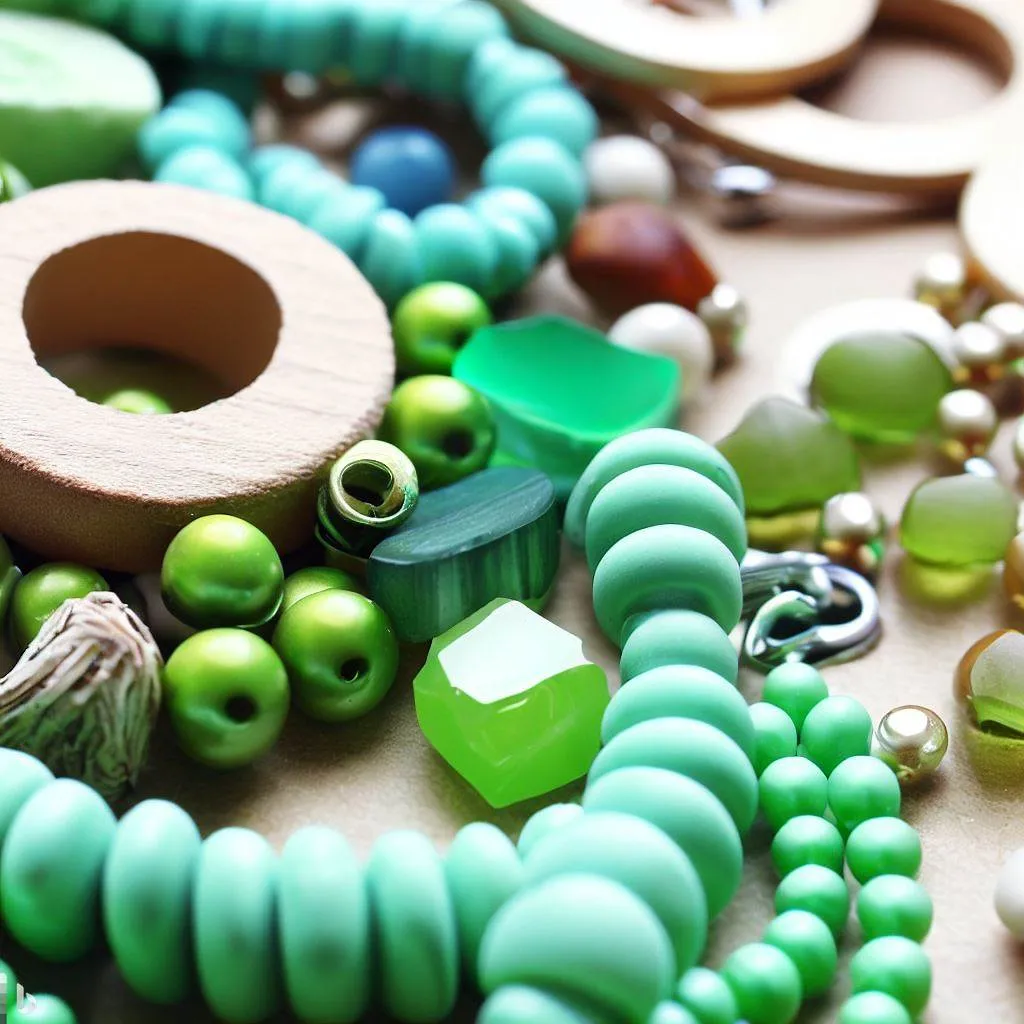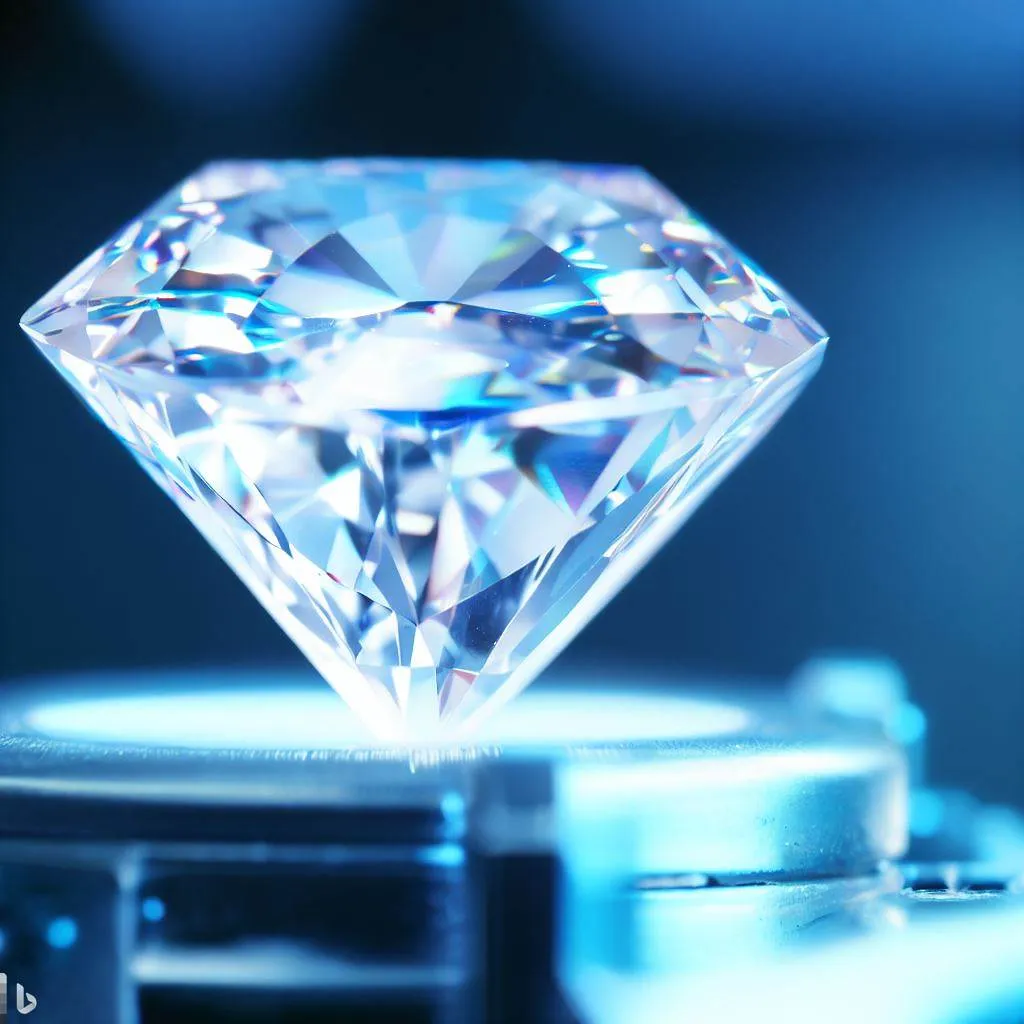Humans have cherished jewelry as a part of their culture for thousands of years.
Traditional jewelry materials, however, have had a negative impact on the environment.
We aim to change this by practicing eco-friendly jewelry-making and utilizing sustainable materials in jewelry production.
The production of precious metals and gemstones through mining contributes to deforestation, water pollution, and energy consumption.
In recent years, the jewelry industry has witnessed a growing trend toward the use of eco-friendly materials.

Table of Contents
Sustainable Materials
Using sustainable materials in jewelry production reduces the negative impact on the environment and promotes ethical practices.
Here are some examples of sustainable materials:
Recycled Metals
Recycling precious metals like gold, silver, and platinum reduces the need for mining, thereby preventing destructive effects on the environment.
Recycled metals are as valuable as newly mined metals and enable the creation of beautiful and unique jewelry designs.
– The Rise of Recycled Plastic in Jewelry Making
– Sustainable Silver: An Alternative to Traditional Sterling Silver
– The Beauty of Upcycled Glass in Jewelry Making
– The Future of Jewelry Making: Biodegradable Materials
Lab-grown Diamonds
Lab-grown diamonds offer a much more sustainable alternative to traditional diamonds, as they eliminate the need for mining and have a significantly smaller carbon footprint.
Scientists create lab-grown diamonds in a laboratory using advanced technology, and these diamonds possess the same physical and chemical properties as traditional diamonds.
Lab-grown diamonds are an ethical and eco-friendly alternative to traditional diamonds.

Sustainable Gemstones
Certain gemstones, such as labradorite and moonstone, have a lower environmental impact as they are mined in smaller quantities.
Look for gemstones certified by organizations like Fairmined and Fairtrade, which ensure responsible and environmentally friendly sourcing.
Innovative Materials
Innovative materials are revolutionizing jewelry production by reducing waste and promoting sustainability.
Here are some examples of innovative materials:
- Bioplastics:
Bioplastics, made from renewable resources like cornstarch, offer an eco-friendly alternative to traditional plastics. They are biodegradable and can be used to create unique and colorful jewelry designs. - Mushroom leather:
Mushroom leather, derived from mycelium, the root structure of mushrooms, provides a sustainable alternative to animal leather.
Mushroom leather is durable, lightweight, and breathable, making it perfect for jewelry designs. - Recycled glass:
Utilizing recycled glass in jewelry production reduces waste and energy consumption compared to producing new glass.
Recycled glass can be used to create colorful and unique jewelry designs.
FAQ
What materials are sustainable for jewelry?
Materials like gold, silver, gemstones, stainless steel, pearls, aluminum, wood, clay, and sea glass are considered sustainable choices for jewelry.
What is eco-friendly jewelry?
Eco-friendly jewelry is manufactured in an environmentally and socially responsible manner. It is made with sustainable materials that reduce waste, energy consumption, and water usage. Choosing eco-friendly jewelry supports the well-being of the planet and the people involved in its production.
How can jewelry be made environmentally friendly?
To make jewelry environmentally friendly, you can implement several practices:
- Sustainable Materials: Use eco-friendly materials such as recycled metals, fair trade gold, conflict-free stones, and repurposed components. These materials minimize the environmental impact and support ethical sourcing.
- Recycling and Reusing: Incorporate recycling and reusing techniques in the jewelry-making process. This involves melting down old jewelry pieces to create new ones, reducing waste and the need for new raw materials.
- Conservation of Resources: Implement measures to conserve resources during jewelry production. This includes reducing energy consumption, minimizing water usage, and optimizing material usage to minimize waste.
- Ethical Labor Practices: Ensure fair and ethical labor practices throughout the entire supply chain. This involves working with suppliers who prioritize fair wages
- Packaging and Shipping: Opt for sustainable packaging materials, such as recycled or biodegradable materials, and minimize packaging waste. Choose environmentally friendly shipping methods, such as carbon-neutral shipping or utilizing local suppliers to reduce transportation emissions.
- Transparency and Certification: Provide transparency to customers about the sourcing and production processes of the jewelry. Seek certifications from reputable organizations that verify the use of sustainable and ethical practices.
By adopting these approaches, jewelry can be made in an environmentally friendly manner, reducing its ecological footprint and promoting sustainability in the industry.
What are eco-friendly bracelets made of?
Eco-friendly bracelets can be made of various materials, and one sustainable choice is resin. Resin is a durable and long-lasting material that can be recycled. It can also be made from renewable resources such as plant-based materials, making it an eco-friendly option.
Is stainless steel jewelry eco-friendly?
Yes, stainless steel jewelry is eco-friendly. It is 100% recyclable, not coated with toxic materials, and does not produce toxic runoff during production. Additionally, stainless steel already uses a significant amount of recycled metal as its primary raw material.
What are eco-friendly beads?
Eco-friendly bead options include acai beads, hair pipe bone beads, vinyl beads, recycled glass beads, and paper beads. These beads are made from sustainable materials and contribute to environmentally friendly jewelry production.
What are eco-friendly metals for jewelry?
Cobalt, steel, and tantalum are all eco-friendly metals. Cobalt can be sourced from recycled scrap, and suppliers work to obtain it through ethical procurement. Steel and tantalum also have lower environmental impacts compared to other metals.
What is the most sustainable jewelry metal?
Aluminum is considered one of the most eco-friendly metals for jewelry. It can be melted down and reformed without quality loss, making it a sustainable choice for jewelry businesses.
Are silicone bands eco-friendly?
Yes, silicone bands are environmentally friendly and recyclable. They are considered one of the top options for events, festivals, and fundraising. If looking for greener alternatives, materials like bamboo, steel, glassware, ceramics, recycled paper wraps, and sustainable fabrics can be considered.
What materials should be avoided in jewelry?
It is best to avoid materials like nickel, lead, mercury, chromium, selenium, cadmium, arsenic, and antimony in jewelry production due to their harmful effects on the environment and potential risks to human health.
Final Thoughts
Eco-friendly jewelry is a growing trend in the jewelry industry.
Using sustainable and innovative materials can reduce the negative impact on the environment and promote ethical practices.
Recycled metals, lab-grown diamonds, and sustainable gemstones are great options for eco-friendly jewelry.
Bioplastics, mushroom leather, and recycled glass are innovative materials that can be used to create unique and sustainable jewelry designs.
